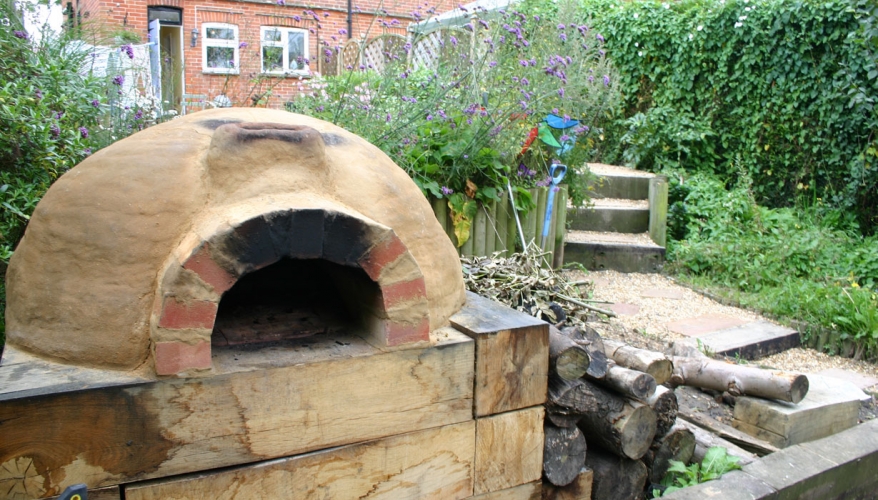We spoke to expert Simon Brookes to get the low-down
‘I was inspired to make my first clay oven after I went on a Make and Bake course at River Cottage, and it’s still hanging on in my back garden. Every now and again it falls down a little bit and I patch it up. I’m a bit of a nerd, so while I was building it, I took some photos and threw up some photos on a website, which went a bit crazy, and tons of people started visiting. Eventually I wrote an eBook and put all the instructions in one document, which people can download for free on my site.
I have run a few courses and helped build some for projects for schools and community groups. People really enjoy building ovens - it’s a tactile, hands-on experience building one. Depending on the weather, they take about five solid days to construct, but if you can get all your mates round, feed them and ply them with alcohol you can get it done quicker. You can’t rush too much though, as you need to let the layers dry.
You can build one in pretty much any garden, as long as you’ve got enough space. My base is about a metre square. They kick out heat through the door at the front and the chimney, but the actual oven doesn’t get hot, so you can have them quite near a house.
The walls are about 30cm thick, which are great for retaining heat and kicking it back. If you are cooking pizzas, you need the oven as hot as possible, so you keep a fire burning. If you want to do something like bread or slow-roast joints of meat, you can use the heat-retaining walls to radiate heat out over time and cook in there without having a fire.
They’re such fun – my barbecue doesn’t really get a look in any more. We’ll have other families come over for a pizza party, put all the ingredients out on a table, and people roll their own pizzas, put toppings on, chuck them in and out of the oven, and they’re done in a couple of minutes. Ovens become a focus point to your garden; people who’ve been round have subsequently built their own.
Make Your Own
What you’ll need to find before making your oven
You first need to build a plinth – mine is made out of recycled oak beams, but you could use sleepers, bricks or breeze blocks. You lay a floor for the oven made out of normal London housebricks on top of the plinth. The oven is constructed in various layers over a dome of sand, which you then remove to form the cooking cavity.
Depending on where you live, you can dig clay straight from the ground. You could dig it from your own garden. I got mine from a farmer who’d been digging out his field.
My philosophy with these ovens is to scavenge as much as you can – you can find clay around rivers and lakes – you may need permission, just as you do for getting your sand from a beach. If all else fails, you can buy the cheapest possible clay from pottery suppliers. If you get powdered clay, you can add sand directly, which saves effort during the mixing process. The clay is mixed with sand using footpower - otherwise known as puddling.
You’ll need to protect it from the elements – you can build any kind of roof. Have a look at my site for inspiration. Find full construction instructions at clayoven.wordpress.com







